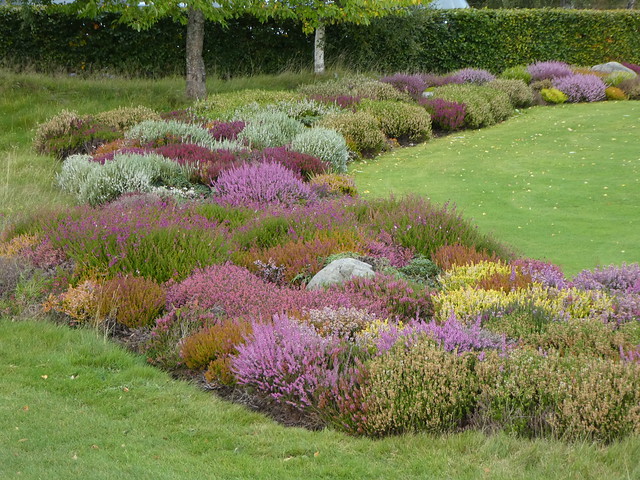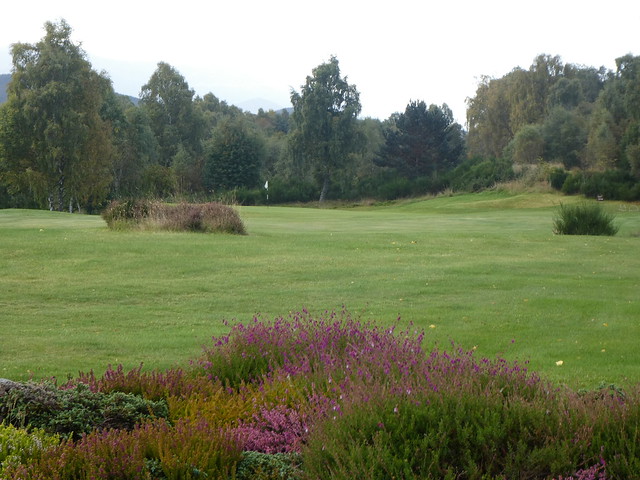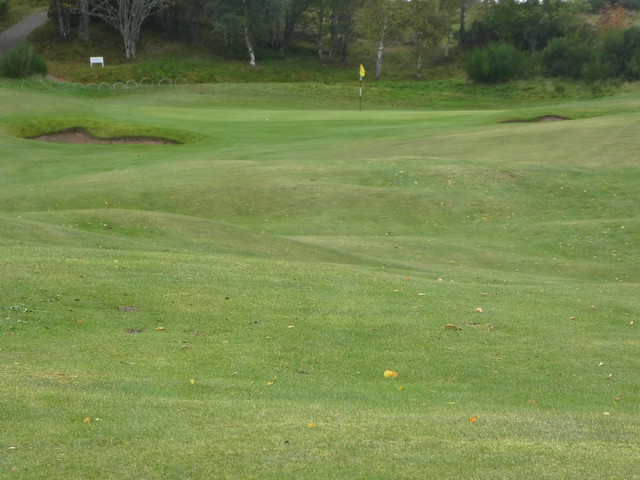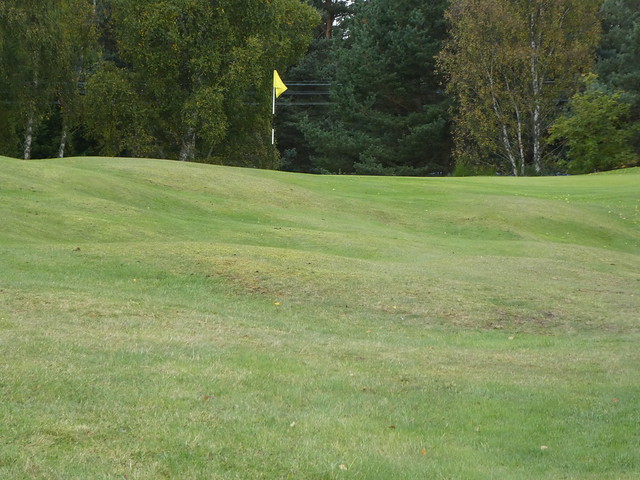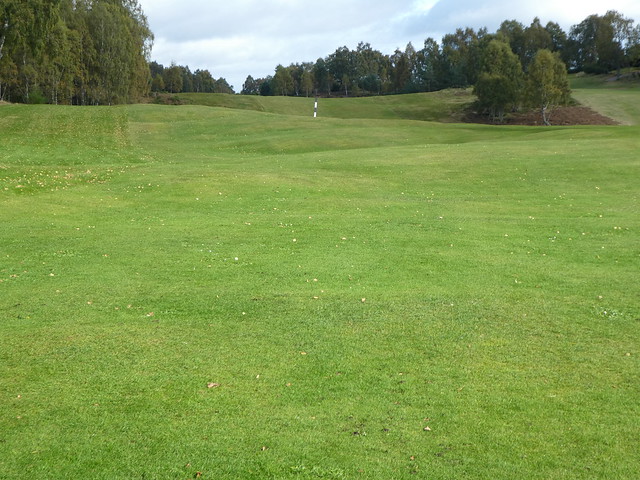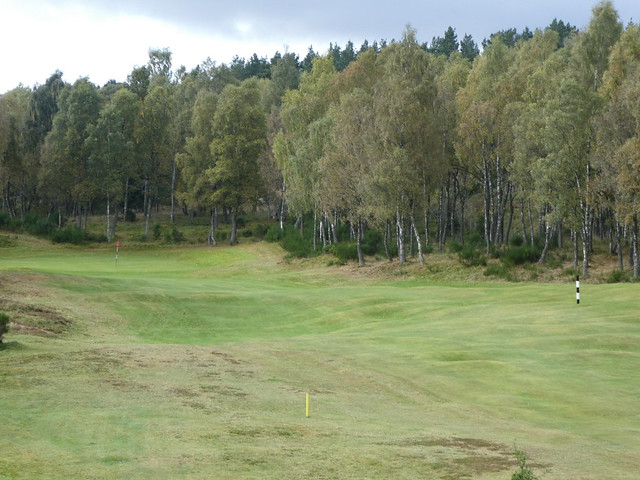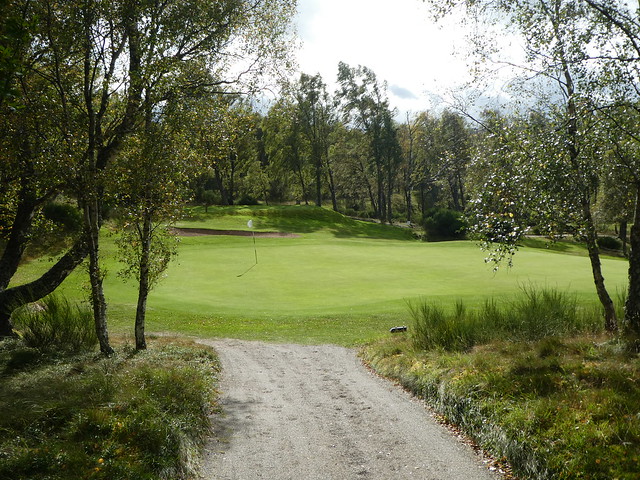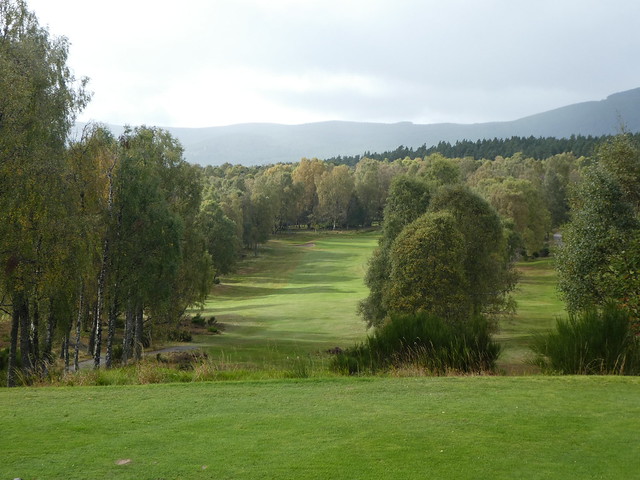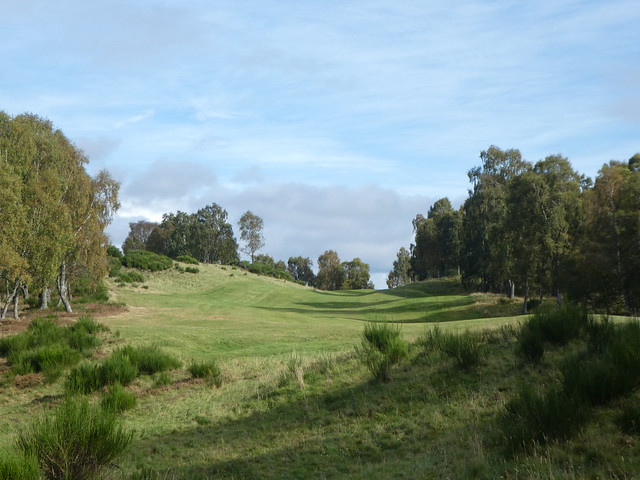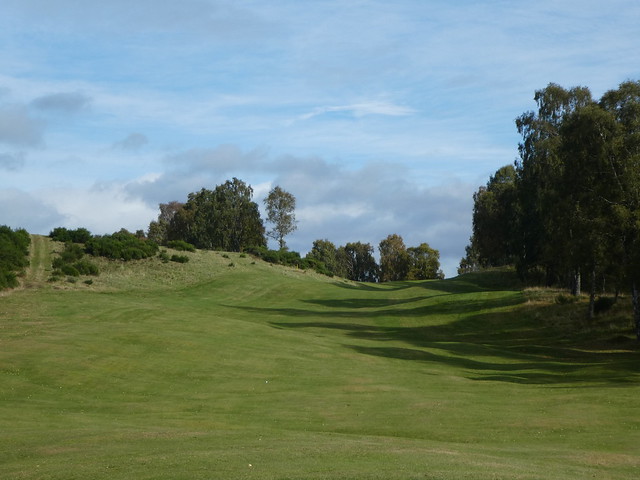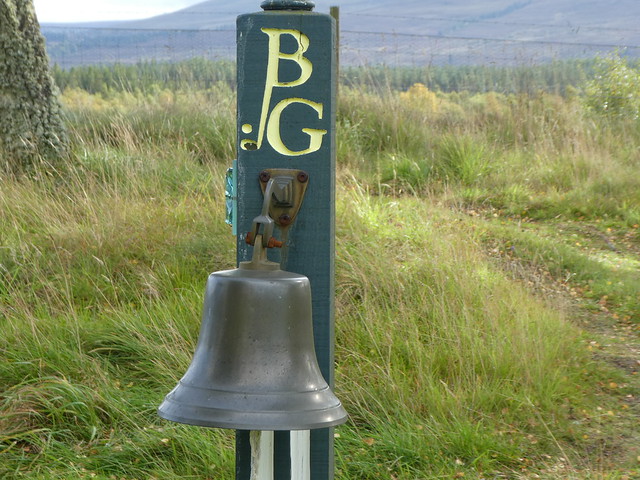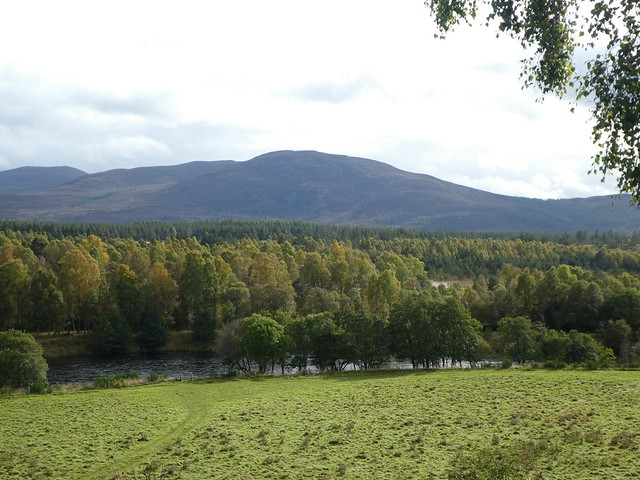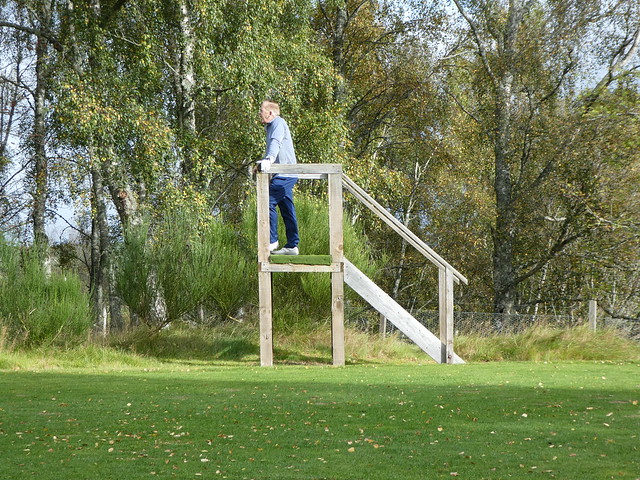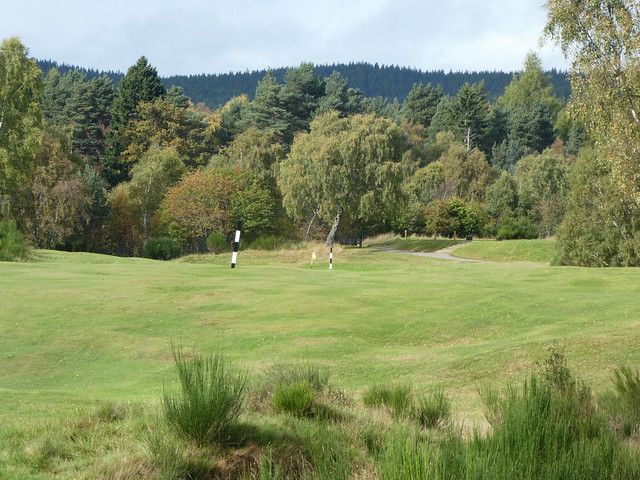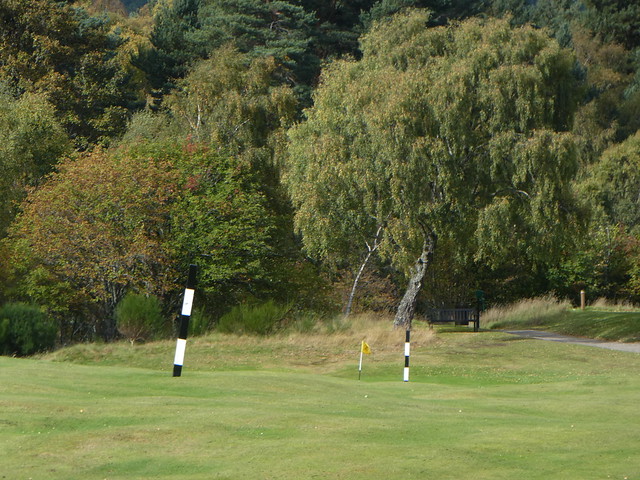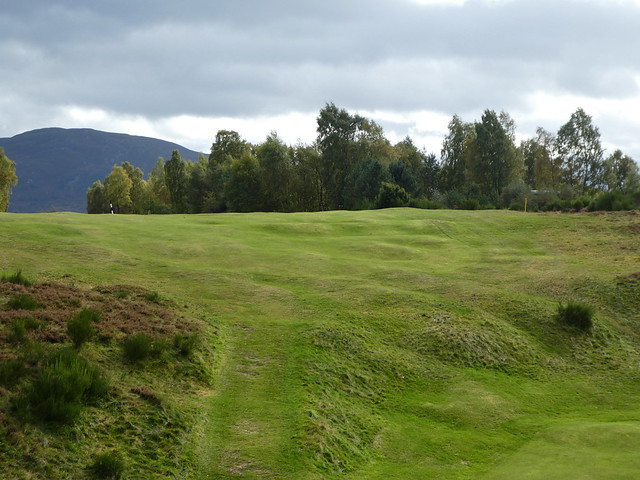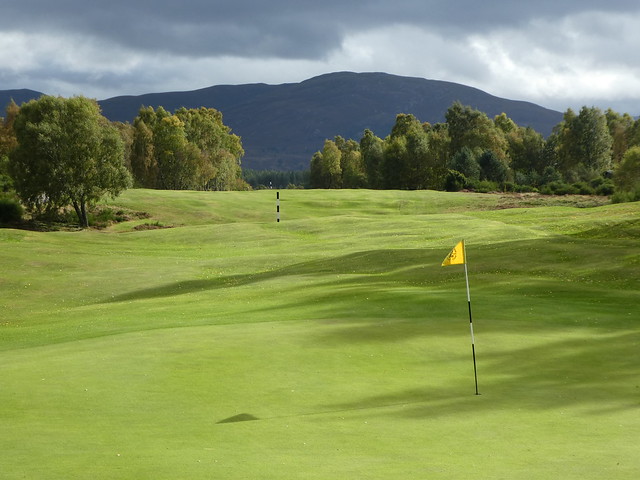After playing Pitlochry in the mid-Highlands my friends and I were scheduled to play the following day at Ullapool in the Northwest corner of Scotland. Like much of the Scottish west coast Ullapool gets the brunt of the weather coming across the Atlantic. Looking at a three-hour drive and a forecast that was grim (sheets of cold rain coming in and hanging over the area all day) we called an audible and decided to play at the Boat of Garten instead, only an hour away.
The change was serendipity defined. We accidentally stumbled on a true gem. It was love at first sight between "The Boat" and I. Not since my first time playing Cruden Bay and Jack's Point in New Zealand have I been so blown away.
The Scots have a way with words naming their towns with phonetically pleasing names that roll off the tongue. Where else on earth do you have town names such as the
Drum of Wartle,
The Boat of Garten hasn't been on my radar before (and I suspect is not on the radar of others for the same reason) because it is a wee course, as the Scots would say. It plays 5,648 yards from the tees that visitors are permitted to play from, with a par of 70. What a big mistake on my part judging courses by their length. Some of my favorites are indeed short: North Berwick, Myopia Hunt Club, Prestwick and Cruden Bay, so my epiphany is now complete and I am very much open to discovering the charms of shorter courses.
Located in Inverness-shire, in the Cairngorms National Park, the setting is pristine and magical. Like at Walton Heath and Lytham & St. Annes, the Boat begins with a par 3. At 169 yards, it is a relatively gentle opener provided you are not long, where the green falls off at the back.
The course was immediately reminiscent of Walton Heath and Sunningdale: a beautiful heathland
paradise, although the Boat also has a load of silver birch and Scottish broom as well.
The golf course was designed by James Braid, who visited in 1930 and 1931, changing a previous design from nine holes to eighteen. The course has a roughhewn look with rumpled fairways and a charming lay of the land feel. In their excellent book James Braid and his 400 Courses John Moreton and Iain Cumming describe how during Braid's career course construction was essentially done by hand or with the assistance of horses or earth scrapers, which were used only to smooth out areas for greens. Steel shafts weren't legal on golf clubs in Britain until November 1929, thus the course was designed for play with hickory shafted clubs and a different golf ball. The "going back in time" feel of Boat of Garten is palpable.
The third hole, a par three, changes orientation and direction and plays toward a
wee rail line that runs parallel to the opening holes, the Strathspey Steam Railway. On the day we played a little two-car work train was sputtering up and back on the track bringing back good memories of the days when my kids would watch Thomas the Tank Engine every day!
Because Braid kept the original hilly landforms unchanged the course features many blind shots. The par
five fourth hole features a blind second as seen in the picture above, seen looking backward from the green. The Boat has a lot of black and white striped poles like the one you see at the rise of the hill, above. I know not everyone likes blind shots, although I do and find them fun and quirky.
How do you make a 369-yard par four hole, like the seventh at the Boat challenging? Blind shots, rough land forms, rolling undulations, uneven lies, humps, and hollows seem to do the trick.
A view of the eighth green shows off the sparkling environment of the Highlands with silver birch across the landscape in abundance
The front nine contains a delightful set of holes, although things really get going on the inward nine.
The twelfth hole begins the best four hole stretch on the
course. Twelve is a 344-yard par four that plays from an elevated tee down into a narrow tree lined fairway. The landing area is larger than it looks from the tee, but it is a harrowing tee shot. The green is elevated. Five time Open Champion and course architect Braid said about the hole, "The 12th is in a superb setting, the birch woods and the mountains beyond, I don't think there is any equals it."
The thirteenth is a great hole, representing the only three shot hole on the back nine. Although only 469 yards, it plays uphill almost the entire way through a natural valley and gets progressively narrower from tee to green. It also has an unsettling forced carry off the tee. The top of the hill on the hole contains another directional black and white pole and the flag is not visible until you are less than 150 yards away. A further challenge is provided by the sloping nature of the hole, which cants from left to
right from tee to green.
Your second shot on the thirteenth doesn't provide much clarity on where you should hit your next shot. It's still uphill and blind!
The view from the fourteenth tee box
It is difficult to evaluate and assess a golf course outside of its environment. Certainly, it is easy to fall in love with courses like Pebble Beach or Turnberry because of their scenic beauty. Or with Pine Valley or Morfontaine because of their splendid isolation. The environment at the Boat is just as enchanting, but in a different way. This is the heart of the Scottish Highlands, and as seen from the picture taken from the 14th tee box, the kingdom of mountains, rolling hills, and scenic beauty will win over even the most hardened curmudgeon. That is the River Spey splashing gently below the golfer in a land of enchantment filled with castles and whisky distilleries. After playing the gentle 14th we were in a very relaxed and good mood as we made our way to the fifteen hole.
The 15th hole is one of the best I have ever played and is sui generis. There is a tip-off that something is up when you walk up the hill to
the tee box and there is a lookout tower. At the top of the steps is a
platform that allows you to look out over the hole to give some sense of what
you are about to play, which is a sub-300 yard par four with two blind shots. The idea behind the lookout is to allow the unsuspecting golfer to attempt to get a lay of the land. A brilliant idea, but even after looking out over the hole, it remained an enigma.
The hole’s name is "Gully" and it is a bi-polar hole. Not bi-polar as in schizophrenic or manic-depressive. Bi-polar in that is contains two directional poles to help the
unknowing golfer find their way. As unsuspecting American studs we all hit driver off the tee, which was a mistake. It really only requires an iron off the tee so that you don’t
land in the gully (which you can't see from the lookout tower).
A closer look at the aiming poles and flag in the distance on the 15th
For whatever reason, I haven't focused my studies on the golf courses of James Braid. I have played a half dozen of his designs: Gleneagles, St. Enodoc, Nairn, Brora, and Ganton, and like them all. My opinion of James Braid just went through the roof with a hole like the 15th hole, it is just such a brilliant, challenging, and oddball hole.
For emphasis, I repeat, that this is a hole of only 289 yards from the yellow (non-medal) tees. The second directional marker is there to help the unwitting golfer who ends up in the gully (as we all did!) at least have some shot of aiming at the green for their second.
The view from the bottom of the gully on the fifteenth highlights the brilliance (and natural terrain) of the hole
The green itself is a sort of punchbowl, and is as challenging as the rest of the hole. Aside from "wow," there is not much else to say about the hole. If the skies were not threatening, we would have walked back to the tee to play it all over again. I would wager to say there is no other hole on the planet like
it.
The skies darkened (actually it rained very hard) as we were finishing, so I didn't get a chance to get any pictures of the 437-yard par four grand finishing hole. The club history accurately describes it as a hole that builds character.
Every golf course has a personality. The personality of the Boat of Garten is that of a short, half-blind elder statesman that hasn’t lost his ability to charm you. What a place to play golf. I don’t know if the Boat has a cult following like Cruden Bay or Prestwick or North Berwick. If it does, I just drank the Kool-Aid and have joined the cult. I would like to apply to become president of the Boat of Garten fan club.
Every golf course has a personality. The personality of the Boat of Garten is that of a short, half-blind elder statesman that hasn’t lost his ability to charm you. What a place to play golf. I don’t know if the Boat has a cult following like Cruden Bay or Prestwick or North Berwick. If it does, I just drank the Kool-Aid and have joined the cult. I would like to apply to become president of the Boat of Garten fan club.
The Highland setting is very special. I am in complete agreement with Moreton & Cumming, who, in their book on Braid courses, say this about the Boat: "Travel and play the course. Its silence is deafening." And with Robert Burns, "In heaven itself, I'll ask for no more than a Highland welcome."
P.S. - To my friends in Ullapool, fear not, it is included in a future planned trip that will encompass the North Coast 500. I look forward to visiting with the sun shining down on me.
